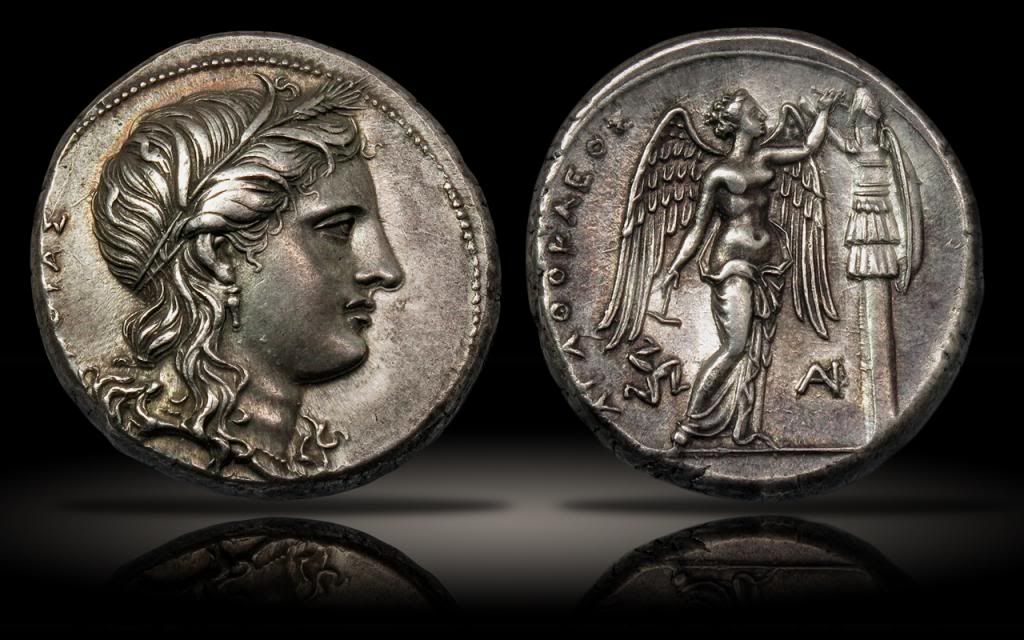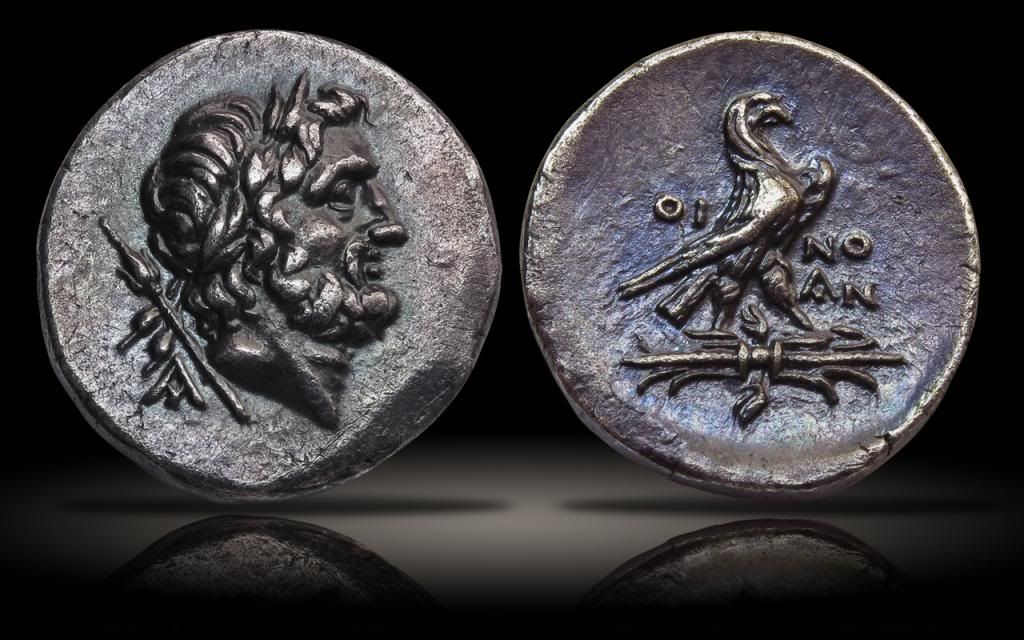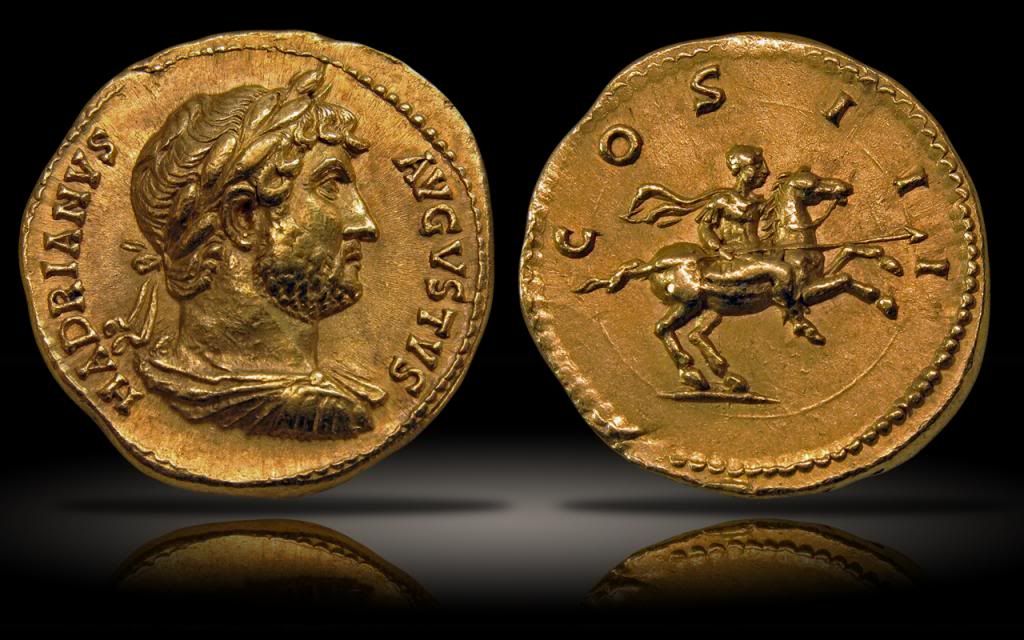My photography process
I've had several people ask me how I take my coin photos, so I thought I'd make a new thread here. I have to admit that it's a bit atypical and I've slowly determined it from a lot of trial and error. Your mileage may vary but it's worked well for me so far:
1) I always shoot during the daytime, in a room with light colored cellular blinds, that provides some nice diffuse light in the room.
2) I place the coin on a white business card.
3) I have a very small tripod (about 4 inches tall) which screws into the bottom of my camera so that I can get it almost directly over the coin.
4) I'm using a Canon G15 digital camera on manual macro mode.
5) I have the camera almost directly overhead but slightly tilted, which I've found better captures the surfaces of the coin. I try not to zoom in too far, and definitely only ever use optical zoom, never the digital zoom.
6) As ancients are often high relief, I work to position them at the right angle to the camera using a stack of business cards, holding up one side or moving the coin into the correct position with multiple sides at a slight tilt.
7) I use a single linear Ottlite, not directly overhead, but about a foot above the coin and a few inches away from the top of the coin.

8) If part of the coin is poorly lit, I use the white back of a business card to bounce some light onto the coin, holding it up with a mini-sculpture of the Colosseum which I have on my desk.
9) The camera lens is only a couple inches away from the coin itself, but the Ottlite and room lighting provide enough light to fully illuminate the coin.
10) I tend to use the following settings: F-Stop f/8, Exposure: 1/13 sec, ISO-100, Focal length: 12mm, Max aperture: 2.28, No flash. I vary the exposure time slightly depending on the brightness of the coin (1/10 for bronze up to 1/15 for gold in some cases).
I tend to make minimal changes in Photoshop. The most painful part of the process is cropping the coin and removing the background. Photoshop has some nice tools to identify the edges but because ancient coins are notoriously non-circular, it takes some work.
I hope that helps! Here's a couple example pictures (which I still need to write up into separate posts):



1) I always shoot during the daytime, in a room with light colored cellular blinds, that provides some nice diffuse light in the room.
2) I place the coin on a white business card.
3) I have a very small tripod (about 4 inches tall) which screws into the bottom of my camera so that I can get it almost directly over the coin.
4) I'm using a Canon G15 digital camera on manual macro mode.
5) I have the camera almost directly overhead but slightly tilted, which I've found better captures the surfaces of the coin. I try not to zoom in too far, and definitely only ever use optical zoom, never the digital zoom.
6) As ancients are often high relief, I work to position them at the right angle to the camera using a stack of business cards, holding up one side or moving the coin into the correct position with multiple sides at a slight tilt.
7) I use a single linear Ottlite, not directly overhead, but about a foot above the coin and a few inches away from the top of the coin.

8) If part of the coin is poorly lit, I use the white back of a business card to bounce some light onto the coin, holding it up with a mini-sculpture of the Colosseum which I have on my desk.
9) The camera lens is only a couple inches away from the coin itself, but the Ottlite and room lighting provide enough light to fully illuminate the coin.
10) I tend to use the following settings: F-Stop f/8, Exposure: 1/13 sec, ISO-100, Focal length: 12mm, Max aperture: 2.28, No flash. I vary the exposure time slightly depending on the brightness of the coin (1/10 for bronze up to 1/15 for gold in some cases).
I tend to make minimal changes in Photoshop. The most painful part of the process is cropping the coin and removing the background. Photoshop has some nice tools to identify the edges but because ancient coins are notoriously non-circular, it takes some work.
I hope that helps! Here's a couple example pictures (which I still need to write up into separate posts):



Learn about our world's shared history told through the first millennium of coinage: Colosseo Collection
0
Comments
Virtus Collection - Renaissance and Baroque Medals
Your coin images all have a unique style in common. That's cool.
"Inspiration exists, but it has to find you working" Pablo Picasso
Maybe I will try some of those ideas.
I actually do make use of an Ottlite, but most of my photos have a lower f stop (almost always f/5.6) and ISO 400.
I have preferred to use a flash as well. Somewhat strange to use it with an Ottlite, I suppose, but I have almost always preferred the result.
The only editing software that I have is what came packaged with my Canon Rebel XTi.
DPOTD
WNC Coins, LLC
1987-C Hendersonville Road
Asheville, NC 28803
wnccoins.com
World Collection
British Collection
German States Collection
<< <i>Thanks EVP, I'm going to try that method this weekend. >>
EVP?